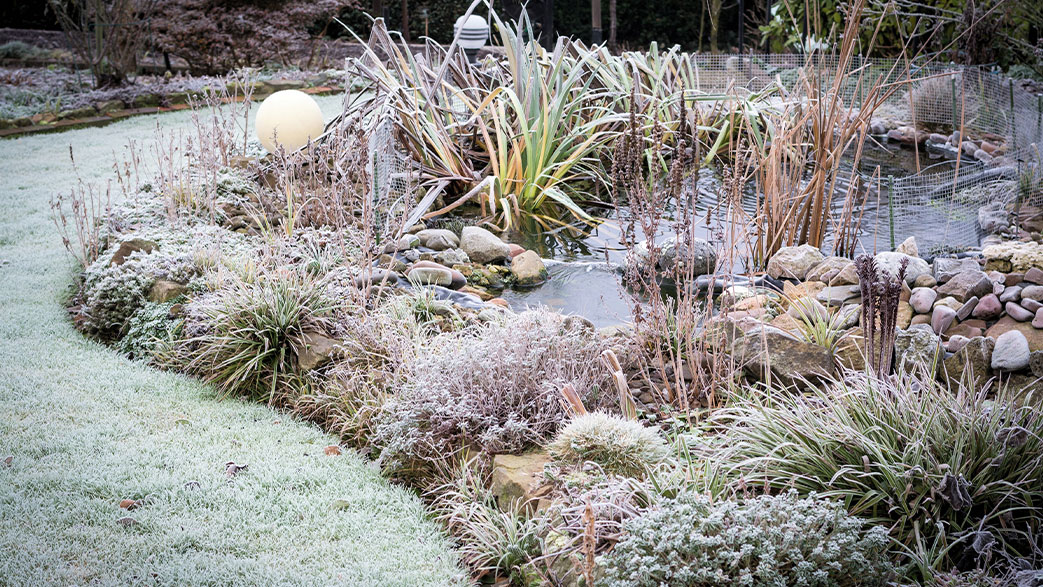With the arrival of winter comes the cold weather and the potential for your pond to freeze over. This should not be an issue so long your pond always has a sufficient input of oxygen and the water quality is good. To ensure this is achieved it is important that there is an area of surface water on your pond that remains ice free. With an ecosystem pond it is likely that the running water from the cascade should provide sufficient aeration and circulation to prevent your pond from completely freezing over. If you were to turn your pump off for the winter, your pond would most likely end up completely sealed by ice. This can then have a detrimental impact on the wildlife in your pond, with oxygen levels falling whilst the proportion of dissolved waste gases rise. If you have a still water pond or the flow in your pond isn’t quite enough to retain an ice-free area a small air pump/bubbler would not only clear an area on the pond’s surface but also assist in oxygen circulation. Failing that you can opt for a small ball with the hopes that the wind will keep it moving thus a hole in the ice.
We cannot stress enough how important it is to keep your pump running throughout the winter season on your ecosystem pond! Correct filtration and aeration are 2 of the essential components of a complete ecosystem and are provided by the pumps for your pond being on at all times. Without the constant water flow there will be no aeration from the water flowing out of the Biofalls and the beneficial bacteria that accumulate on the filter pads will be made redundant. If the mechanics wasn’t enough to justify leaving your pumps on then the added aesthetic beauty should be! Waterfalls and streams during the winter look magnificent, with ice formations altering the waters path and creating a new characteristic to your feature that can only be enjoyed at this time of year.
During these colder months the health of your plants will deteriorate with an increasing number of dead and brown leaves. These should be cut back on both your aquatic and terrestrial plants in preparation for the winter season. If dead leaves from in and around your pond find their way into the water it is essential the majority are removed to keep organic matter contents at a manageable level. A short term impact of leaving leaf debris in your skimmer or pond for an extended period of time is the browning of your pond water. Long term, it could result in your pond seeing an influx of unwanted algae in the spring as the leaf debris will supply your pond ecosystem with excess nutrients, feeding their growth.
For a more complete summary of what can be done to ready your pond for winter, check the maintenance and FAQ’s sections on our website.


